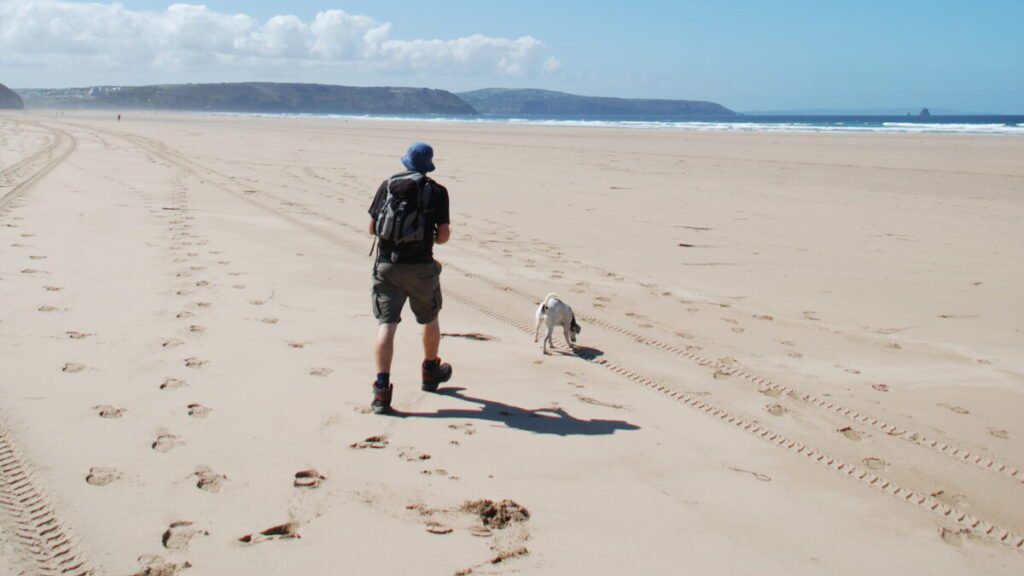What is the average walking speed for hikers?
A person’s average walking pace is a useful thing to know – but few people actually know it. Do you?
You would think that it would be common knowledge how fast we, as a species, walked. It is, after all, something the majority of us do every day, and have done since we first stood on our own two feet at about the age of one. For those undertaking a trek it’s also quite an important fact to know, for without any knowledge of how fast we are progressing along the trail it’s very difficult to work out how far we can walk in a day, and whether we can reach that day’s destination before nightfall.
Thankfully, a quick search on the internet will tell you that man indeed, look on the internet and Yahoo Answers, to quote just one website, gives us the figure of a mile every 15 minutes, or 4mph. It’s a figure I hear banded about frequently, and it’s the figure I read most often in books on this matter too. Alfred Wainwright, a man who knew a thing or two about walking, used to say that 4mph was his speed on the flat.
So that, it appears, is that. When the wisdom of Wainwright and the worldwide web tell us they walk at 4mph, then you must be some kind of idiot to think that the truth is something different.
Which I guess makes me some kind of idiot. Because no matter how hard I try, when I am on the trail I rarely manage to reach the giddy speed of 4mph. But nor do I think I go particularly slowly. After all, even as a knackered forty-something I still tend to overtake more people when trekking than overtake me.
True, in my role as a guidebook writer I often have to pause to take photos, make notes or jot down waymarks on my GPS unit, all of which slow my progress. But I do make allowances for these delays in my calculations. Yet I very, very rarely reach 4mph, even when I’m deliberately marching on a flat, decent track, unencumbered by luggage or work; never mind on a muddy uphill trail, with a full backpack.
Of course, progress when on a long-distance trail does tend to be slower than on, say, a flat pavement. The long-distance path is often muddy, rough and filled with gradients of both the up and down variety. You’ll be walking for longer than you would in a normal day, and your speed is bound to decrease toward’s the day’s end as you tire. You’re often carrying a fair bit more too than you would be normally too. Most experienced trekkers will have stashed away in their backpack their waterproofs, sunhat/glasses/cream and maybe a packed lunch with you, not to mention all the other encumbrances of life on the trail, such as trekking poles, map, case, compass and guidebook. If you’re camping then you can double the load, easily, given cooking and camping equipment you’ll probably be lugging along with you.
Plus, of course, the chances are that if you’re on a long-distance trail then you’re on holiday; and for many that means taking it easier, slowing down one’s pace in order to drink in the scenery, fill one’s lungs with air, pausing here and there to watch otters frolic or kingfishers hunt, rather than march on to one’s destination. (Though we know of many a trekker who likes to do that too!)
So the question remains: how fast do humans walk when they’re on a trail?
To answer that question, I took some readings while on a recent trip to The Ridgeway. For those who aren’t familiar with it, this is an 87-mile national trail that cuts across the heart of England, and is fairly typical of this country’s long-distance trails (of which there are 12, plus two more in Wales and one more, Offa’s Dyke, that’s split between the two).
Taking my GPS, and recording with an almost religious, ultra-orthodox observance, when we or paused to take in the scenery, snatch a photograph or take notes, I was able to get a reading for the total distance we walked, and the total time it took us to cover those miles. Divide one by the other and we should get a good idea of what kind of mph I’m achieving when on the trail.
To make my measurements slightly more accurate – or at least to iron out any anomalies or freak results that may occur during the study, I decided to record over several days rather than just one.
The results were as follows: That, as suspected, we are more likely to walk 3mph when on the trail, and not 4mph. What’s more, I should say that on this particular trail, we overtook more people than overtook us, by a ratio of about 10:1.
